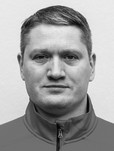Special physical training model for skating technique perfection in beginner ice hockey
Фотографии:
ˑ:
PhD, Associate Professor V.V. Krutskikh1
A.N. Sasin1
PhD, Associate Professor V.S. Lvov1
1Russian State University of Physical Education, Sports, Youth and Tourism (SCOLIPE), Moscow
The features of special physical training are analyzed to improve the quality of skating for young hockey players at the stage of initial specialization. Such a training feature as the development and improvement of skating skills is one of the most important components of the training process. With due attention to this part of the training, there is an increase in game performance in general. The development and improvement of the player’s skating skills and the further bringing of motor actions to automatism will allow players to win game situations without thinking about how to move them. The player changes the parameters of his movement many times during the match: direction, speed, maneuverability, and these changes must occur as quickly as possible, otherwise control over the game situation will be lost. Good skiing skills need to be trained since childhood, when a child grows, his body develops. Methodical, correctly selected general and especially special physical training of players at the initial specialization stage in the conditions of sharp growth of large muscles and bones is extremely useful and useful and is the foundation for further player improvement. This is due to the relationship between physiological changes occurring at this age and a well-built training process: players with higher physical fitness are less likely to be injured, less likely to make mistakes and are ahead of the game in development of peers with weaker training. The level of general physical development of a player determines the quality and effectiveness of special training, which, in turn, will affect the quality of work on the technique.
Keywords: hockey, hockey training, children's hockey, physiological features, off-ice training, skating technique.
References
- Verkhoshanskii Yu.V. Osnovyi spetsialnoi podgotovki v sporte [Fundamentals of special athletic training]. M.: Sovetskiy sport, 2013. 216 p.
- Zatsiorskiy V.M. Fizicheskie kachestva sportsmena: osnovyi teorii i metodiki vospitaniya [Athlete's physical qualities: training theory and methodology fundamentals]. M.: Sovetskiy sport, 2009. 199 p.
- Nikonov Yu.V. Podgotovka yunykh khokkeistov [Training in youth hockey]. Study guide. Minsk: Asar publ., 2008. 319 p.
- Savin V.P. Teoriya i metodika khokkeya [Theory and methods of hockey]. Textbook. Moscow: Akademiya publ., 2003. 399 p.
- Shestakov M.P., Nazarov A.P., Cherenkov D.R. Spetsialnaya fizicheskaya podgotovka hokkeistov [Special physical training of hockey players]. M.: SportAkadePress, 2009. 142 p.
- Bracko M.R. Skating into the future: hockey in the new millennium II . CA: Academic Publishers, 2004. 117 p.
- International ice hockey federation (IIHF)[Electronic resource]. Coach manual Level 1: Coach Development Program. Available at: http:// www.hockeyeasternontario.ca/docs/IIHF_CoachDev_Off_Tactics.pdf. 29.04.2017.
- Roy D. Developing skating speed and quickness. International Hockey Skating Summit, 2003. CA: CA: Academic Publishers, 2003. pp. 21-25.


